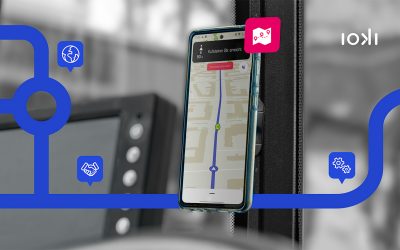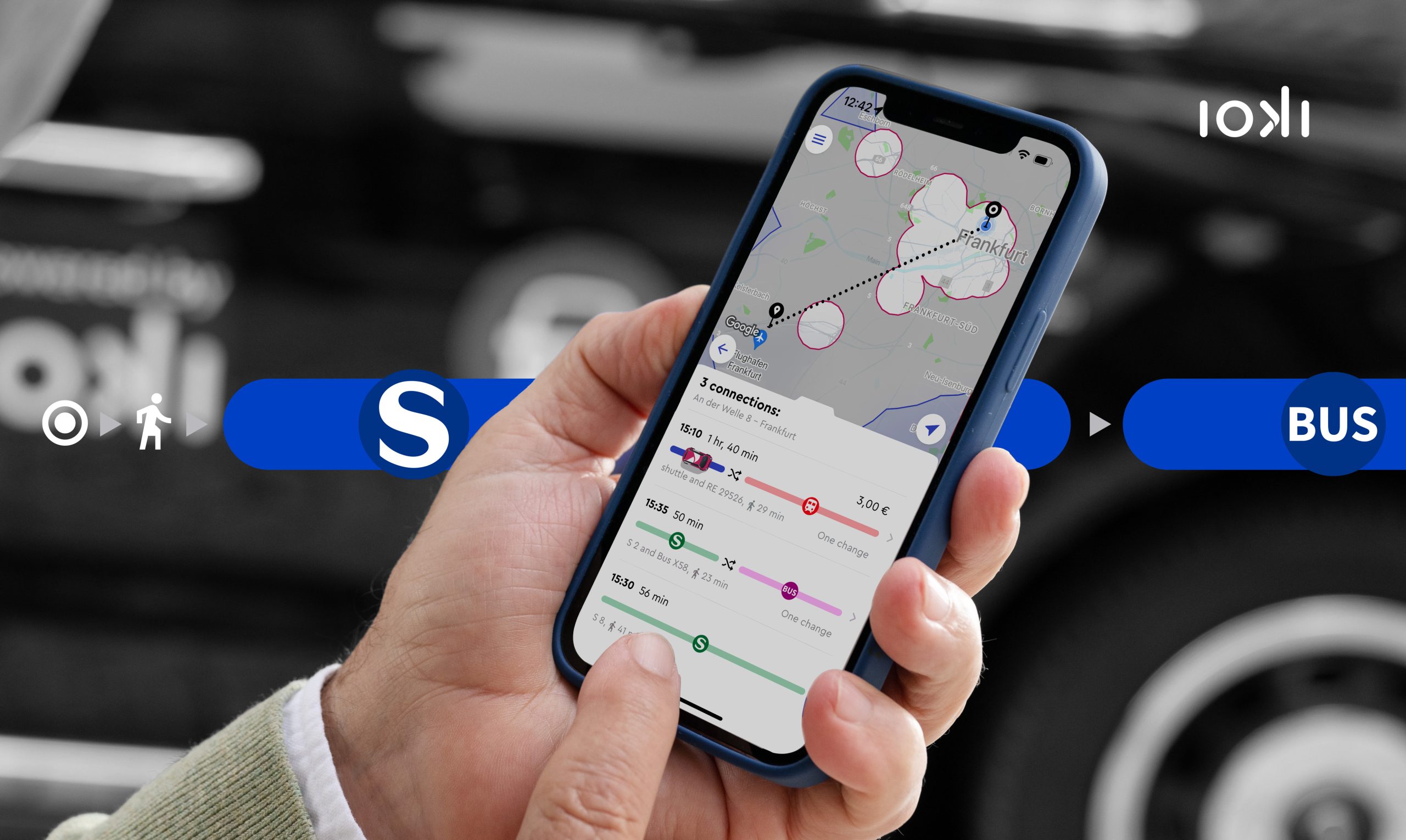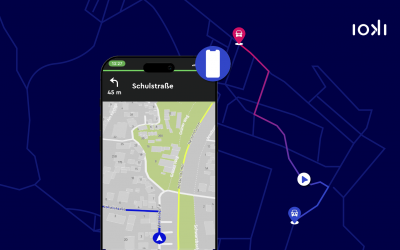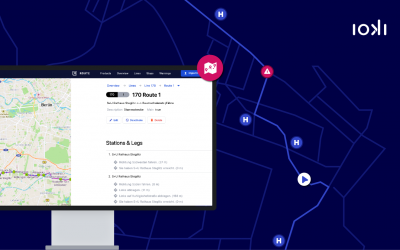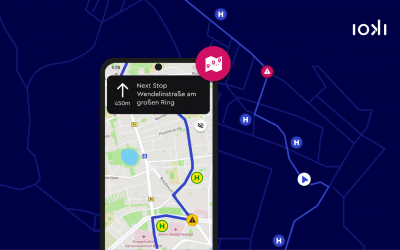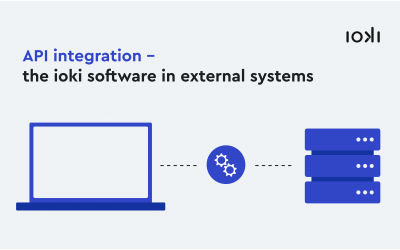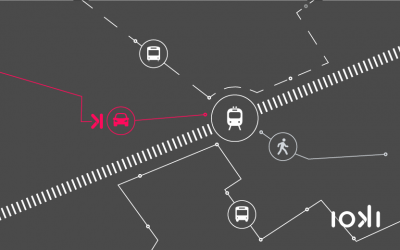In transport planning, a thorough public transport (PT) analysis is essential to identify gaps in coverage and improve accessibility. This is where our latest product innovation comes in: ioki Plan.
ioki Route check-in: spotlight on our latest product innovation
ioki Route is the newest addition to the ioki product family. This innovative solution includes the ioki Route App, a navigation tool, and ioki Route Control, a route management application, both specifically designed for line-based bus transport. ioki Route has now been around for over half a year and has achieved significant milestones since the product launch: Let’s take a look back.
Seamless Travel: 3 Features for Optimal Integration of Demand-Responsive Transport into Public Transport
Demand-responsive transport (DRT) bridges the first and last mile of public transport. To ensure a smooth journey, they must be seamlessly integrated into local public transport. But what does seamless integration look like on the ioki Platform? We explain this with 3 features.
Easy on the road with the ioki Vehicle App: an insight into the navigational app for demand-responsive transport
The ioki Vehicle App is an important part of the ioki Platform alongside the ioki Passenger App and the ioki Operator. It has been specially developed to ensure the smoothest possible journey for drivers, a comfortable journey for passengers and efficient operations for transport companies.
Currently, the implementation of on-demand transport is often associated with a high level of bureaucracy and paperwork. This is eliminated by using the ioki Platform and the app.
Off to new places: ioki creates first tourism mobility analysis
The focus of mobility analyses by ioki is the development of individual and customised recommendations. The result: integrated transport planning, a forward-looking mobility mix and optimised public transport services. What previously focussed mainly on everyday mobility has now been extended to include tourist mobility.
Navigation in bus transport: a look behind the scenes with ioki Route Control
No longer a luxury gadget: navigation apps are as much a part of travel and transport management as much as trains belong on rails and buses on the road. But what is actually behind successful and safe navigation in bus transport? And what happens when things need to be organised quickly?
Navigation on the bus: How does the bus know where to go? ioki Route App
Anyone who has ever been in a foreign city, or who wants to get from A to B quickly in their own hometown, knows this: Just open a navigation app like Google Maps or Apple Maps, enter your starting point and destination, and off you go. If a road or footpath is closed, the apps will show you alternative routes. This is not so easy on a public bus, where you have to think about the dimensions of the bus and the stops, as well as the passengers. But how does it work on a scheduled bus route? How do the drivers know where the bus is going and, above all, what happens when roadworks block the regular route?
Ridepooling in Transport Planning
Demand-responsive transport based on the ridepooling concept is on everyone’s lips and has long been an important pillar of individual, public transport. Data-based transport planning is needed to realise the full potential of on-demand mobility. When transport companies want to start a new on-demand operation, they inevitably face the question of the right ridepooling design and the best balance between the costs and benefits of the flexible offer.
API integration – the ioki software in external systems
What is behind the ioki API? “We are continuously working on our data storage and also on the connection and integration of our system into external systems,” says Andreas Schwarzkopf, Head of Backend Engineering at ioki. The Application Programming Interface, or API, can be used to integrate software into external systems. In the ioki case, this means integrating our operating system for digital mobility primarily into external Mobility as a Service (MaaS) platforms.
Mobility Analytics: Planning urban and regional infrastructure
Beyond the horizon: mobility is more than just moving from A to B. It is the product of the infrastructure surrounding it, which limits or enables it.
Mobility Analytics: Planning new mobility offers
Time for New Mobility: What would the best measures be worth without concrete implementation? Not much, exactly! And that’s why a mobility analysis is not only about evaluating the current situation and developing a catalogue of measures, but also and above all, in a very practical way, about planning the new mobility offers in line with the existing system.
Mobility Analytics: developing intelligent solutions for public transport systems
From theory to practice: Last week we already looked at the added value that a first stocktaking of the current offer can provide in the form of an analysis of the public transport system. In the following, we combine these findings with concrete solutions.
Newest article

Digital Mobility on the Move – Insights from the Smart Country Convention 2025
Imagine a city where citizens purchase their bus ticket directly through a service app, book an on-demand shuttle, and effortlessly switch between various modes of transport – without needing additional apps or complex logins. This vision was presented by our colleague Maximilian Rütten and Linus Frank from our partner Vesputi at the Smart Country Convention (SCCON) 2025.


